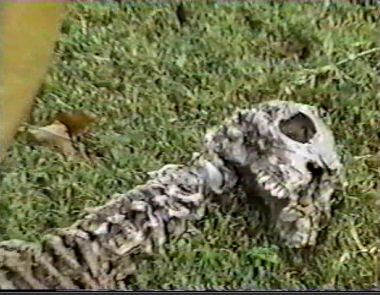|
|
The
Platinum Cannon Shipwreck |
|
| Joe
Champion | David
Hudson(semi-technical lecture) | David
Hudson(made easy) | 20th
Century Alchemy(3 Chapters)
|
| The Platinum Cannon Shipwreck | The Mango Metal Report(3 chapters) | Bookstore | |
|
INTRODUCTION Madam Marie Curie, a famous physicist and chemist, along with her husband Pierre made a significant scientific discovery in 1898. They were able to isolate a few grams of radium from tons of pitchblende, a mineral consisting largely of uranium oxide. With the discovery of the first unstable (radioactive) element, science underwent a change of direction. At the beginning of this century, physicists were in a position to undertake the study of the physical structure of the other and of the atom. Numerous scientists were soon to make a name for themselves. Bohr and Rutherford developed principles which in 1913 allowed the symmetrical planetary model of the atom to become the "official science." In 1905, Einstein presented the foundation for the Laws of Relativity with the Special Laws to shortly follow. A few years later, in 1919, Rutherford and Chadwicke were the first to "split the atom. 11 Rutherford I s work gave rise to the idea that enormous forces were needed to cause nuclear changes. This was the origin of high energy physics. During this time frame, Einstein,, Fermi, Rutherford, Bohr, Pauli and Plank were but a few of the noted scientists who finished the foundation of nuclear physics, sealing off any possibilities, until now, of "low energy" nuc lear change. THE RESONANCE REACTION An alpha fission can be forced to occur on any isotope have a magnetic moment at extremely low energies. This experimentally proven phenomena validates the new alpha model theories of the atom. moreover, such transmutations show the existence of a new class of nuclear reactions for which the energy transfer does not follow the electromagnetic relations. Hg199 ---> Pt195 + a Within this reaction we can easily calculate the reaction energy using standard equations. Q = (Mx -My - Ma) X 931-50
MeV/u This reaction is easy to accept because of the positive energy release. Let us now review another proven fundamental alpha (a) fission: Ag107 ---> Rh103 + a Calculating the energy of this reaction through the same equations we have: Q = (Ag107 - Rh103 - He4)
x 931.5 In retrospect to the energy/mass equation, it is impossible for this endothermic nuclear transmutation to occur unless the starting isotopes have a threshold energy greater than Q. Yet it has been replicated at low energy levels in numerous experiments. The only explanation for this reaction is that the nucleus stores energy until its quantum is of sufficient size to cause the release of the alpha particles.
|
|
|
| Joe
Champion | David
Hudson(semi-technical lecture) | David
Hudson(made easy) | 20th
Century Alchemy(3 Chapters)
|
| The Platinum Cannon Shipwreck | The Mango Metal Report(3 chapters) | Bookstore | |
|
Copyright©2014
Globe Merchant |

